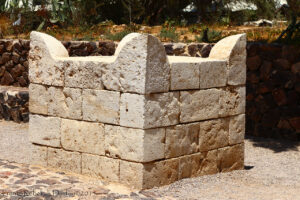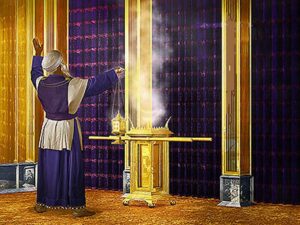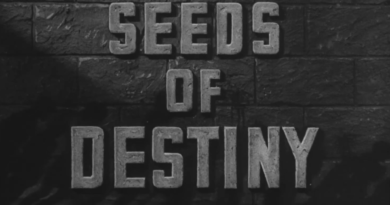Unveiling the Deeper Meaning of Altars in the Bible
BIBLICAL HISTORY OF ALTARS
Introduction: The altar is where the earthly meets the divine, and our heart finds its way home. Bible altars could be traced to the early history of the patriarchs. It is a significant object mentioned to God, a place or an event that occurred. God calls us first—not to a platform, but to an altar.
OBJECTIVES OF THIS STUDY
➖Understanding the development and biblical history of the altars from ancient times (B.C.E.) to the New Testament period (C.E.) and this present age.
➖ Having a deep understanding of the major types and divisions of the altar.
➖ Analysing the classification of the Hebrew altar.
Definition: The altar is a place where offerings are made to God or God’s deity. The word altar took its root from a Hebrew and Greek meaning. The Hebrew word for altar is “Mizbeah,” meaning “slaughter, kill, slay,” while the Greek word “Thusiasterism” means a place of sacrifice, a place of slaughter, a place where blood is sacrificed.
An altar is a place that serves as a centre of worship or ritual. An altar is a table-like structure or platform used in Christian churches. The altar is also a memorial place where God meets man. The altar is therefore a symbol of God’s presence. Cain and Able raised a sacrifice, but it was not mentioned that they raised an altar (Gen 4).
Biblical history confirmed that after Abraham, Jacob, Isaac, etc. built an altar, it was during MOSES era that God instructed how to create an altar. This signifies that our God is a God of order and structure; he gave Moses all instructions, even the measurement of the length, breadth, and width of the building.
God also gave him instructions to use wood, brass, and fire to keep the altar burning, which signifies that wood stands for us; the people of Jesus are the brass, while the fire is our situation and the difficulty we are facing. If God is brass, then fire can’t consume you; even when you pass through fire, you are coming out stronger.
TWO MAJOR KINDS OF ANCIENT ALTARS
- Lay Altar
- Horn Altar
Altar of earth or unhealthy stone: There was no fixed shape or dimension, which could be made of rock or earth (Judges 13:19), a single large stone (Judges 14:33–35), or several stones arranged (1 18:31). The first altar was before the law.
Horn Altar: His second altar with specific instructions and patterns that only the priest or delegated person can handle, built by Noah.
LAY ALTARS
- Pre-Mosaic Altar (Gen 8:20, 12:7, 13:4).
Way back in history, people in many ancient cultures built altars. Why? Well, it was all about a strong desire to connect with something divine. These altars weren’t fancy—just simple mounds of earth or stones. They were used for important rituals and offerings. People didn’t just build them to keep the gods happy; they wanted a special place for prayer and guidance.
These are improved structures. Abraham built an altar to sacrifice Isaac in Gen 22; with No metal, no iron, or carved stone, Jacob/Laban made a heap of stone in Gen 31:46
- The Mosaic Period Altar, Ex 24:4
During the Mosaic period, which spanned from around 1250 to 1000 BCE, the Israelites built altars to worship God. These altars were an essential part of their religious practices and played a crucial role in their daily lives. Ex 24:4 shows that Moses and his forefathers were used to a specific pattern of altar which may not have a specific shape.
Design and Construction: The Mosaic period Altar was a rectangular structure made of earth, stone, or wood.
* Made of shittim wood, 5 cubits long and broad, and 3 cubits high
* Foursquare shape with horns on the four corners, overlaid with brass
* Vessels for the altar, including pans, shovels, and firepans, made of brass
* A grate of network of brass with four rings in the corners
* Staves made of shittim wood, overlaid with brass, to bear the altar
The Court of the Tabernacle
Hangings of fine twined linen, 100 cubits long, on the south and north sides
* 20 pillars and sockets of brass, with silver hooks and fillets
* Hangings of 50 cubits on the west and east sides, with 10 pillars and sockets
* Gate of the court with hangings of 20 cubits, with four pillars and sockets
* All pillars are filled with silver, with silver hooks and brass sockets
* The length of the court is 100 cubits, the breadth is 50 cubits, and the height is 5 cubits
* All vessels and pins of the tabernacle and court are made of brass
HORNED ALTAR
- The Tabernacle Altar. Ex27:1-8: Specific instructions were given regarding the pattern, dimension and material of shittim wood.
- Altar of Joshua (Josh 22:9): Joshua built one, which must have followed the Tabernacle pattern.
- The Temple of Solomon: Solomon used an altar of the horned type but gave no account of its construction, even though the dimensions were recorded. 2 Chronicles 4:1
- Altar Of Ahaz. Isa 27:9: The Altar of Ahaz was a pagan altar, likely dedicated to the Assyrian god Assur. It was probably a large, ornate structure with intricate carvings and decorations.

- Ezekiel Period: He described an altar as a rectangular structure, 12 cubits (about 20 feet) long, 12 cubits wide, and 10 cubits (about 17 feet) high. It has a square base with a ledge around the edge and a horn at each corner. The altar is made of wood, overlaid with bronze, and has a ramp leading up to it.
POST-EXILIC ALTAR EZRA 3:2
The Post-Exilic Altar refers to the altar built during the Post-Exilic period, specifically during the reign of Zerubbabel (520–515 BCE) and the subsequent reconstruction of the Temple in Jerusalem. These altars are mentioned in the books of Ezra, Nehemiah, and Haggai.
The Lawful/Idolatrous Altar. Amos 3:14, Hosea 8:11, 1 KING 12:28–33
The Unlawful/Idolatrous Altar refers to altars built for idolatrous worship, which is contrary to God’s laws and commands. These altars were often erected by Israelites who had turned away from God and began to worship false gods and idols.
Examples of Post-Exilic Altar Ezra
The Golden Cafe
Baal and Asherah
High places.
ALTAR OF INCENSE (Ex30:1–100)
The Altar of Incense was used for burning incense, which symbolised the prayers and worship of the people rising to God. The incense was burned twice daily, morning and evening, by the priests.
This verse contains the instructions and use of an altar of Incense. The materials were also shittim wood, which is overlaid with gold and surrounded by a crown or rim of gold. The rings were also made of gold for the means of their movement.

The Patriarchal Altars
The Patriarchal Altars refer to the altars built by the patriarchs of the Old Testament, including Abraham, Isaac, and Jacob. These altars were significant in the early history of the Israelites and played a crucial role in their spiritual development. The sites where patriarchal altars are situated include where Abraham and Isaac erected altars.
Abraham’s Altars locations:
Altar at Shechem: Abraham built an altar at Shechem, where God appeared to him and promised to give him the land (Genesis 12:6-7).
Altar at Bethel: Abraham built an altar at Bethel, where he called upon the name of the Lord and worshipped Him (Genesis 12:8).
Altar at Hebron: Abraham built an altar at Hebron, where he dwelled for a time and worshipped
Isaac’s Altars
Altar at Beersheba: Isaac built an altar at Beersheba, where God appeared to him and reaffirmed the covenant (Genesis 26:23–25).
THE HEAVENLY ALTAR
Hebrews 13:10: “We have an altar from which those who serve the tabernacle have no right to eat.”
Revelation 6:9: “When he opened the fifth seal, I saw under the altar the souls of those who had been slain for the word of God and for the witness they had borne.”
Rev 6:9
An Angel by the Side of the Altar of Incense In Rev 8:3, the heavy Baltar is also measured out. Rev 11:1. An angel that commands the harvest of the soul proceeds from the altar.
Conclusion
The altar, which signifies the meeting point between man and God, is a point of sacrifice, death, conversion, substitution, reconciliation and sanctification. You cannot pass through the altar of sacrifice and the altar of incense and remain the same.
Furthermore, the altar is a place of ritual. In the Old Testament, the altar was used to perform a sacrifice ritual with the shedding of blood, but in the New Testament, the altar represents your heart ritual, either a praise ritual or your prayer ritual. Rev 5: 8.
Altars are memorial points where God meets man; Erio is a memorial point; and Arakeji is also a memorial point where God meets his people.
READ: Setting The Right Mindset For Babalola’s Power Explosion’24
Content Credit | Eunice Oke
Picture Credit |
https://www.christianity.com/wiki/bible/high-places-in-the-bible.html
https://www.exploringbiblelands.com/journal/2015/05/21/four-horned-altar-at-tell-beer-sheva
https://kdmanestreet.com/tag/how-did-the-priest-approach-the-altar-of-incense/




